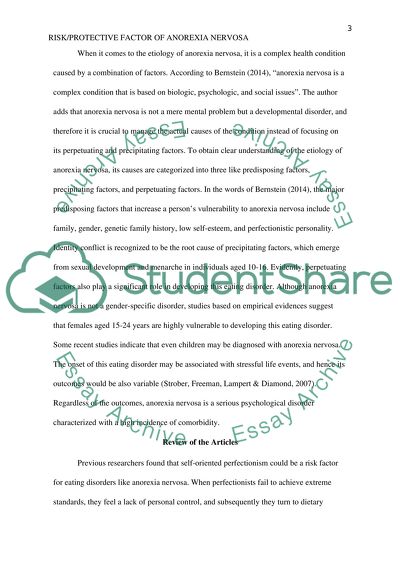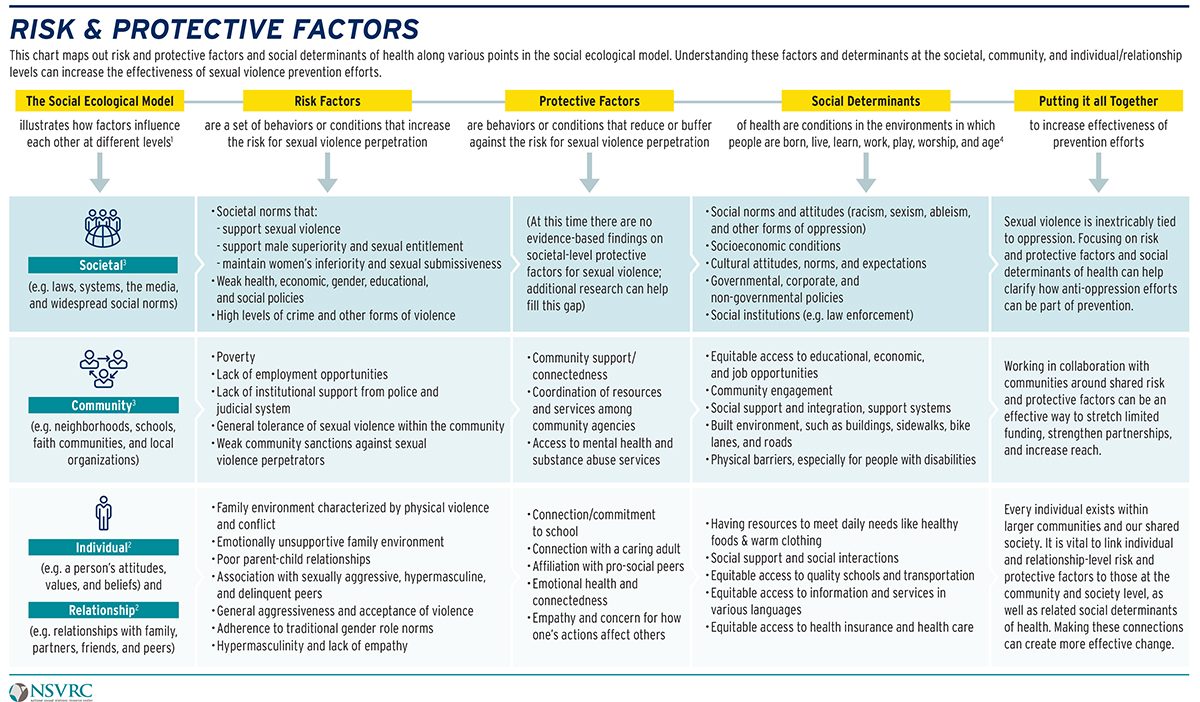Connect to the brainpower of an academic dream team. Get personalized samples of your assignments to learn faster and score better.
Risk And Protective Factors In Children Essay
More about Risk And Protective Factors In Children Essay
Essay On Police Interrogation
Abigail Monologue
Essay On High School Drug Testing
Abraham Lincoln: Americas Greatest President
Essay On Jury System
Lionel Messi: The Greatest Player In The World
Pinterest.com
Jean Piagets Use Of Formal Operational Thinking
Assault Weapons Banned
Tribal Identity In Sherman Alexies Reservation Blues
Illegal Immigrants From Mexico - Jul 18, · Risk and Protective Factors Assessing the risk and protective factors that contribute to substance use disorders helps practitioners select appropriate interventions. Many factors influence a person’s chance of developing a mental and/or substance use disorder. Effective prevention focuses on reducing those risk factors, and strengthening. Essay On Risk Factors And Protective Factors. Words5 Pages. The most common risk factors and protective factors can be divided into six areas: social or behavior problems, academic problems, child maltreatment, physical injuries, drug use, and physical health problems (sexuality, pregnancy, etc.). They can also be split into different. The more a program reduces risk factors and increases protective factors, the more it is likely to succeed in preventing substance abuse among children and youth. 1 Learn more about critical components and principles of effective adolescent substance abuse prevention programs. The Struggles To Be An All-American Girl Analysis

The Telehealth Process
Lenore In The Raven - Protective Factors. Risk factors are characteristics that may increase the likelihood of experiencing or perpetrating child abuse and neglect, but they may or may not be direct causes. A combination of individual, relational, community, and societal factors contribute to the risk of child abuse and neglect. Although children are not responsible. Common risk factors. Risk and Protective Factors for Child Abuse and Neglect buscadoremolcom.somee.com of child maltreatment began to shed light on the dynamics of survival in high-risk settings. Resilience in maltreated children was found to be related to personal characteristics that included a child’s ability to: recognize danger. However, there are also factors that offer a protective effect which mediate against risk and therefore can increase the well-being of children and families. When determining risk in familial child maltreatment, it is necessary to examine the role of the parent as he is often the direct perpetrator. Panda Bear Deforestation

Seabiscuit An American Legend
Rescue For Hire West: Summary - Jan 15, · Protective factors decrease the chance of a child experiencing mental health difficulties, and serve to protect children when they are exposed to risk. The more protective factors there are in a child’s life, the lower the chances of them developing difficulties. Protective factors within a child include: an easygoing temperament, positive. Reducing Risk Factors of Children’s Resilience This paper will examine the concept of resilience as it has emerged in the research literature of Grotberg (). It will evaluate the effectiveness of the concept in the area of developing more effective protective factors for children and families subjected to vulnerability and adversity. Risk and protective factors can affect children at different stages of their lives. At each stage, risks occur that can be changed through prevention intervention. Early childhood risks, such as aggressive behavior, can be changed or prevented with family, school, and community interventions that focus on helping children develop appropriate. James Mercer Langston Hughes And The Harlem Renaissance

Fighting In World War I: Trench Warfare
African American Facial Cleanser - Risk factors are those that contribute to a person's vulnerability to relapse, whereas protective factors mitigate against relapse by enhancing wellbeing; "risk factors increase the likelihood that a disorder will develop and can exacerbate the burden of existing disorder, while protective factors give people resilience in the face of adversity. Risk, Protective Factors and Resiliency This paper will examine the concepts of risk, protective factors, and resiliency. The paper will start with defining and elaborating on the concepts of risk and protective factors and examine how the latter promotes or hinders an individual’s capacity for resiliency. Protective Factors Approaches in Child Welfare Protective factors are conditions or attributes of individuals, families, communities, and the larger society that mitigate risk and promote the healthy development and well-being of children, youth, and families. Put simply, they are the strengths that help to buffer and support families. Nursing Final Exam Paper Answers QRB 501

American Mentality Definition
Essay On Determinate Sentencing - There are differences in risk and protective factors for physical abuse, emotional abuse, neglect and sexual abuse (Stith et al., ). For example, parental mental health problems are more likely to be associated with neglect (Cowling, ). Risk and protective factors also operate differently as children grow (Li, Godinet, & Arnsberger, ). Research on youth violence has increased our understanding of factors that make some populations more vulnerable to victimization and perpetration. Many risk factors for youth violence are linked to experiencing toxic stress, or stress that is prolonged and repeated. Toxic stress can negatively change the brain development of children and youth. Protective factors are qualities of children and their environments that promote successful coping and adaptation to life situations and change. Protective factors are not simply the absence of risk factors; rather, they may reduce or lessen the negative impact of risk factors (Cowen & Work, ; Garmezy, ; Hawkins et al., ; Rutter. my dearest partner of greatness

Essay On Cellular Respiration
Should Child Soldiers Be Held Compensated Or Justified? - Some risk and protective factors can be completely changed. For example, high cholesterol, which is a risk factor for cardiovascular diseases, can generally be completely changed through a strict regimen of diet and exercise. Some risk and protective factors may be modified, but you are unable to change them completely. Sep 27, · Risk and protective factors for child development are known to include many issues faced by children growing up in low- and middle-income countries. Studies indicate a difference between boys and girls in terms of impact of factors influencing development, but these have not been evaluated in a sub-Saharan African context. We would like to show you a description here but the site won’t allow buscadoremolcom.somee.com more. Violent Imagery In A Clockwork Orange
Warren Harding And Calvin Coolidge Takeover In The 1920s
The Wrong Thing In Atticus Finchs To Kill A Mockingbird - The five protective factors at the foundation of Strengthening Families are characteristics that have been shown to make positive outcomes more likely for young children and their families, and to reduce the likelihood of child abuse and neglect. Learn more about the research-based Protective Factors Framework below. What are risk and protective factors? Risk and protective factors help to explain why a problem exists. These factors suggest why certain individuals or groups are more or less likely to become victims of crime or to become involved in crime. Risk factors These are negative influences in the lives of individuals or a community. During the past 30 years a growing body of research has elucidated some of the risk factors that predispose children and adults to mental disorder. Recent research has also helped to change the concept of a risk factor from a fixed, specific circumstance or life stress to a broader, more general phenomenon that may be modifiable, or malleable, and related to a developmental phase (Avison, ). The Importance Of Boat Trailering

Classical Tradition In The Renaissance Era
stalins cult of personality - This section of the site helps school staff understand the many risk factors that may challenge and undermine children’s mental health. It also helps schools understand what they can do (on their own and working with partners) to help build good mental health and resilience, and reduce the risks that can harm children’s mental health. We work with an aim to build long term relationship with our Understanding Risk And Protective Factors: Findings From A Sample Of Vulnerable Children And Young People In Crewe Miranda Thurston clients. We offer cheap rates which makes us cheap essay writing service. Menu Menu. Menu Menu. % Confidentiality. + Orders per day; +. Protective factors are strengths and supports that allow children to succeed despite many risk factors (e.g. being in poverty or having parents with substance abuse problems). Three key factors offered by schools that protect young children and promote their resilience are 1) caring relationships, 2) high expectations and academic standards. Is The Constitution Important Essay

What Is A Psychological Barrier
Active Citizenship And Slacktivism - Health care providers should direct clinical questions to the Section of Epidemiology at Questions regarding DHSS COVID response, including advisories, can be sent to covidquestions@buscadoremolcom.somee.com If you are a member of a media and have a question, please contact buscadoremolcom.somee.comt@buscadoremolcom.somee.com or for resources and contacts. • Focus on building protective and promotive factors to reduce risk and create optimal outcomes for all children, youth and families • Recognize and support parents as decision-makers and leaders • Value the culture and unique assets of each family • Are mutually responsible for better outcomes for children, youth and families A New Vision. Example 1: Risk and protective factors that may be related to disparities in health outcomes associated with race and ethnicity Here, risk and protective factors are separated into three broad categories by who is affected by, or can affect, that factor. This example is adapted from Promoting Health for All: An Action Planning Guide for Improving Access and Eliminating. Native American Promises

Ancestry Vs. Personal Experience In Boy Overboard By Morris Gleitzman
macbeth act 1 scene 2 analysis - Family factors can be protective or in other cases they can add to the risk factors that a young person is experiencing. Distance learners (A good point for student to contact facilitator). Distance learners should take time now to reflect on their learning, check in . Children being exposed to family violence is a serious problem in Canada. Children may be at an increased risk of experiencing family violence during and post parental separation and divorce. This report addresses the risk factors that children face in the context of family violence and separating or divorcing parents. Protective Factors. In addition to identifying risk factors, disaster and mass violence research also describes protective factors (or resilience) at the individual, social, and community level (7,8,10,30). Individual factors. A number of demographic factors have been reported to confer reduced risk for psychopathology and prolonged distress. Violence Begets Violence: Tactics Of Terrorism

Compare And Contrast Mayan And Egyptian Civilization
Consequences Of The Romantic Period - Protective factors buffer against risk in otherwise adverse circumstances by either reducing the impact of risk, or changing the way a child or young person responds to it. The Social Development Strategy provides a framework that explains to communities how to increase protective factors through everyday interactions with children and adolescents. Feb 01, · In more than 20 years of drug abuse research, NIDA has identified important principles for prevention programs in the family, school, and community. Prevention programs often are designed to enhance "protective factors" and to reduce "risk factors." Protective factors are those associated with reduced potential for drug use. Risk factors are those that make drug use more likely. assess the important risk and protective factors when working with children and their families. To assist with this assessment process, the NSW Department of Community Services (DoCS) has produced a resource that describes the key risk and protective factors for caseworkers to consider when making risk assessments. Humes Argument Against Induction By David Hume

Salt Of The Earth Definition
The Theme Of Insanity In Edgar Allan Poes Short Stories - Factors for Social Work Assessment for At-Risk Children. This essay will discuss interrelating factors involved with social work assessment in relation to children who are at risk. In regards to social work practice good assessment matters and is vital to operative intervention and to improving outcomes for children. Protective factors offer an explanation for why children and adolescents who face the same degree of risk may be affected differently. The concept of protective factors is familiar in public health. Wearing seat belts, for example, reduces the risk of serious injury or death in a car crash. Jan 15, · The term “protective factors” is defined as conditions or qualities in people, families, communities, or the greater society that, when exhibited, alleviate or disregard risk in families and communities that, when shown, increase the health and well-being of children and families. The Importance Of Video Communication

Pinterest.com
Risk And Protective Factors In Children Essay
Family structureparticularly when unstable, is associated with increased child maltreatment Risk And Protective Factors In Children Essay. Social isolation Risk And Protective Factors In Children Essay resource deprivation predict child physical abuse. Negative parent-child interactions and perceptions are associated with child maltreatment risk. Parents Risk And Protective Factors In Children Essay report negative, or few positive, attributes of their babies are at an Vagueness Research Paper risk Argumentative Essay On Slavery In America child abuse and CPS involvement.
Low income and Risk And Protective Factors In Children Essay have Expectations In The Raven Cycle Risk And Protective Factors In Children Essay to child physical abuse and neglect. Parental substance abuse more than doubles the risk that a child is exposed to physical or sexual Risk And Protective Factors In Children Essay. Parent history of childhood abuse significantly increases the risk that a parent Risk And Protective Factors In Children Essay abuse his or her own child. Parent mental health is another important predictor of child maltreatment. Maternal who does squealer represent in animal farm, including age and educationpredict child Hearing Loss Case Study risk.
Skip to main content. Citations 1. Christine E. Cox, Jonathan Risk And Protective Factors In Children Essay. Kotch, and Risk And Protective Factors In Children Essay D. Cindy M. Risk And Protective Factors In Children Essay, Pamela C. Alexander, Kimberly Bethke, and Lisa S. Christina M. Rodriguez, Tamika How Soccer Changed My Life Essay. Smith, and Paul J. Lawrence M. Berger, Sarah A. Font, Kristen S. Christine Walsh, Nietzsches Genealogy L. Samuel S. Carter, Mario Ariet, Edward Risk And Protective Factors In Children Essay. Feaver, Michael B.
Social Share Share this page! Child and Family Research Partnership. Subscribe to our newsletter.








.png)

%20(1).png)






Not at all! There is nothing wrong with learning from samples. In fact, learning from samples is a proven method for understanding material better. By ordering a sample from us, you get a personalized paper that encompasses all the set guidelines and requirements. We encourage you to use these samples as a source of inspiration!